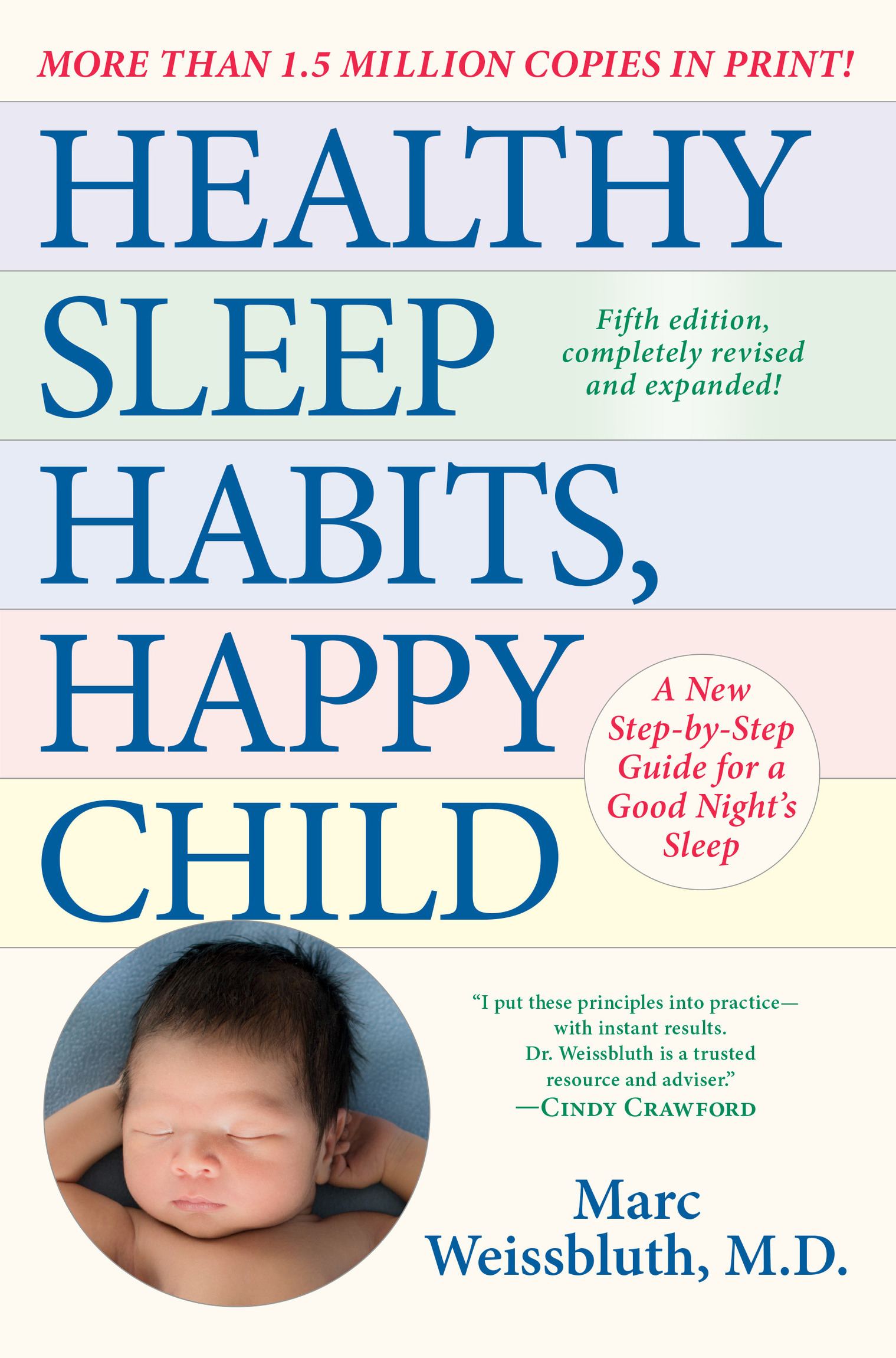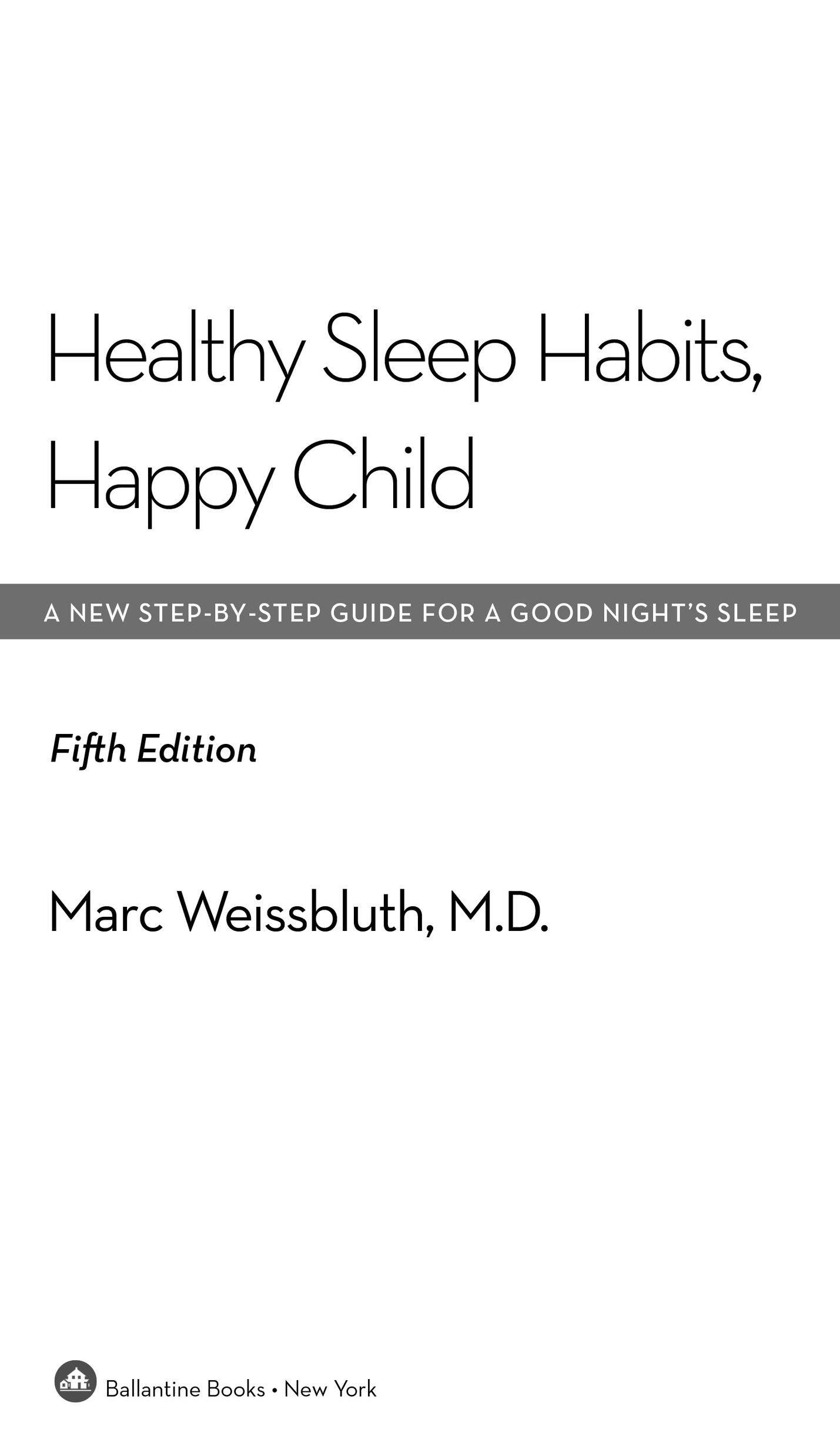Contents
Landmarks
Print Page List
This book contains advice and information relating to the care of infants. It is not intended to substitute for medical advice and should be used to supplement rather than replace the regular advice and care of your childs pediatrician. Since every child is different, you should consult your childs pediatrician on questions specific to your child.
Copyright 1987, 1999, 2003, 2015, 2021 by Marc Weissbluth, Trustee, Marc Weissbluth Revocable Trust
Foreword copyright 2003, 2015 by Cindy Crawford
All rights reserved.
Published in the United States by Ballantine Books, an imprint of Random House, a division of Penguin Random House LLC, New York.
Ballantine and the House colophon are registered trademarks of Penguin Random House LLC.
Earlier editions of this work were published in the United States by Ballantine Books, an imprint of Random House, a division of Penguin Random House LLC, in 1987, 1999, 2003, and 2015.
Quotes by Carl D. Williams in chapter 5 are from Case Report: The Elimination of Tantrum Behavior by Extinction Procedures (Journal of Abnormal and Social Psychology, 1959).
To White Noise by Carrie Fountain 2018 by Carrie Fountain. Originally appeared in The New Yorker magazine. Used by permission of Brandt & Hochman Literary Agents, Inc. All rights reserved.
ISBN9780593158548
Ebook ISBN9780593356128
randomhousebooks.com
Series book design by Mary A. Wirth, adapted for ebook
Cover photograph: Brayden Howie/Shutterstock
ep_prh_5.7.1_c0_r1
As night falls, the weary creatures of earth,
And the woods and the frothing seas,
Grow calm like the stars as they circle their course,
And sleep with quiet ease.
And so all creatures far and wide,
From the craggy fields to the glassy lakes,
Stretch and live neath the silent night,
And sleep takes away their worries and aches.
Virgil , The Aeneid (translation by Jed Weissbluth)
Contents
Foreword
A friend recommended this book to me when my first child, Presley, was seven months old. I was still nursing, but getting ready to stop, and definitely ready to stop the 4:00 a.m. feeding. Also, we had let Presley get into the bad habit of only wanting to sleep on someone. This was great when I needed an excuse for a nap, but not so convenient on busy days.
I devoured the book back then in a matter of hours and put the principles into practice immediatelywith instant results. I especially liked how Dr. Weissbluth taught me to watch out for my childs sleepy signs and then encouraged me to get him to bed before he became overtired. I was also very comforted by Dr. Weissbluths explanation of sleep as one of your childs basic needs. You offer healthy food to your child when shes hungry. You must also offer sleep when your child is tiredeven if she doesnt know it or thinks she doesnt want it (just like my kids didnt usually choose the vegetable on their own!).
As a correspondent for Good Morning America, I had the good fortune to interview Dr. Weissbluth as part of a series called Babys First Year. He became a trusted resource and adviser, not only on the topic of sleep, but also subsequently on potty training and discipline.
Dr. Weissbluths philosophy that a well-rested family is the most important thing has stayed with us always. I cant say that my kids never woke up at night or always went to sleep without a power struggle. We had our ups and downsthats parenthood. But from this book I learned the structure and rhythm of sleep and how to get back into it, an especially helpful skill when I was bleary-eyed at 2:00 a.m. or our schedule got out of balance after traveling or when someone had a cold.
Sixteen years have passed since I became a mother. In fact, my son just got his drivers license. Now, some nights, my husband and I lose sleep for different reasons. But what I have noticed is that even as teenagers both my children are good at reading their own sleepy cues. They seem to remember what it feels like to be well rested, know when they should go to sleep, and dont burn the candle at both ends. This makes for a much happier and harmonious family. I know we are all our best selves when weve given ourselves the gift of sleep. Fortunately, thanks to Healthy Sleep Habits, Happy Child, most days (and nights!) we do! Thanks, Dr. Weissbluth!
Cindy Crawford
How to Use This Book
If you are a sleep-deprived parent:
Read chapter 1: Step-by-Step Program for a Good Nights Sleep and the age-appropriate chapter for your baby at this time. Perhaps, if you are severely sleep-deprived, only read the Summary and Action Plan for Exhausted Parents at the end of the chapter. If needed, follow up by reading chapter 5: Sleep Solutions. Skim or even skip the studies, numerical data, and parent reports as needed. They supply added context, but are not crucial to your understanding of this book.
If you are a well-rested parent:
Read chapter 1: Step-by-Step Program for a Good Nights Sleep, chapters 24, and the age-appropriate chapter for your baby. It may be useful to read the chapters for children younger and older than your child to help you understand how your babys sleep developed and what changes are about to occur. If needed, follow up by reading chapter 5: Sleep Solutions.
If you are not yet a parent:
Read chapter 1: Step-By-Step Program for a Good Nights Sleep, and chapters 24 and 6.
Authors Note
Throughout the book, I use the terms fathers, mothers, marriage, and marital problems merely for convenience. I wish to embrace all partner and partnerchild relationships.
Chapters 611 are partially independent so you will not need to search for information in other parts of the book. However, because some information applies to wide age ranges, there is some repetition of information in different chapters.
Through this text, I have often italicized key phrases (SIDS, for example). You can turn to the index for more information on these words.
Introduction
If you have not already done so, please go back and read the How to Use This Book section.
Its probably hard to think of a time when there were no parenting books about sleeptoday, over a hundred books on childrens sleep have been published containing widely varying and often conflicting advice. The marketplace is full of sleep aids, sleep apps, sleep trackers, special cribs, and other gadgets promising to help your baby sleep better. And then theres the internet. There are countless online forums, blogs, articles, and op-eds about childrens sleep out there that aim to guide and comfort youbut they all have their own philosophies and, like all those new parenting books, contain conflicting advice that will create more confusion than comfort.
Once, there were no books for parents on helping children sleep. My first book, in 1984, focused on why babies cry and how to prevent post-colic sleep problems. Because there was no public discussion on how parents could help their children sleep, I made up the term sleep training to describe strategies for parents. At that time, there was no other parent-advice book on this subject.
Once, sleep for kids was easy. Our baby closed her eyes and she fell asleep. We hoped. Now the subject of childrens sleep appears to be more complicated. When I published my first paper on childrens sleep in 1981, there were only 141 scientific papers published that year on childrens sleep. My first paper described a relationship between infant sleep and infant temperament. Over the next five years, I published seven more studies associating sleep-temperament with sleep durations, ADHD, SIDS, attention span, sleep apnea, and colic, but no other studies on this subject appeared until 1988. Since then, over a hundred studies linking sleep-temperament with different aspects of child development have been published. Now more than six hundred scientific papers on childrens sleep are published









